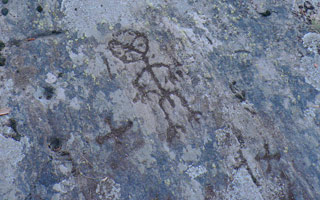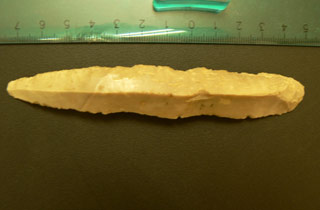Prehistory
Overview on prehistoric finds in Val Pellice
Although subject of studies for over 80 years, the pre-history of the Valley is still almost unknown. Without proper stratigraphic excavations, nothing can be said about the few artifacts found mostly during agricultural works. Contrary to common thought, it cannot be scientifically proven the great antiquity of many petroglyphs found on rocks of the valley, from the bottom up to over 2000 m (cup marks, anthropomorphic figures, "geometric” signs , crosses etc.) that, according to recent studies, should be mostly related to more or less recent historical age (Fig. 1).

The few smoothed stone axes (Fig. 2) are surely ancient, of Neolithic age (between the VI and IV millennium BC), and they are work of the oldest human community so far known in the Valley, witnesses of the early forms of agriculture and animal domestication. Recent research placed the geological outcrops from which were extracted rocks (Jadeite, Omphacite, Serpentinite) to which these axes are formed in the area from the Monviso to Col Barant, opening up important new prospects in research on human presence not only in this sector Alps.

The long flint blade, found on the hill of Luserna, is probably more recent (III millennium). It is a non-local stone, probably imported from the French side (Fig. 3).

The cave paintings discovered about twenty years ago in a rock shelter in the municipality of Villar Pellice (Fig. 4) are of the same period (Copper Age or Bronze Age). The cave paintings consist of geometric red signs, with human figures and arrows arranged in series. Suggestive comparisons can be made with similar depictions of Provence.

The amber chocker belong to the Iron Age, and particularly in the second half of the first millennium B.C. (or even to the period of Romanization), found "among the roots of a chestnut tree" in the municipality of Bobbio (Fig. 5).

All mobile materials mentioned in this short note are exhibited at the Valdese Museum of Torre Pellice.

